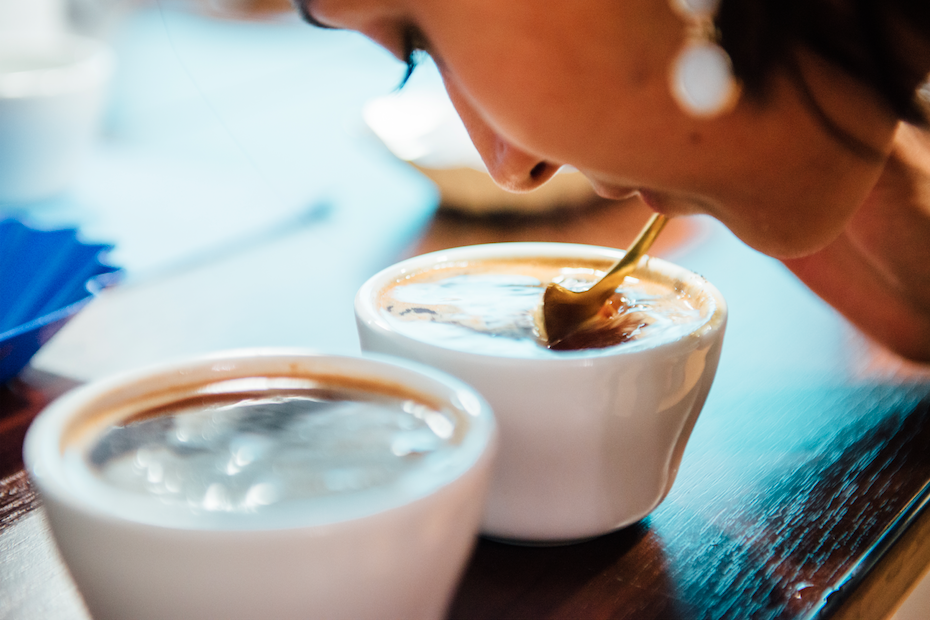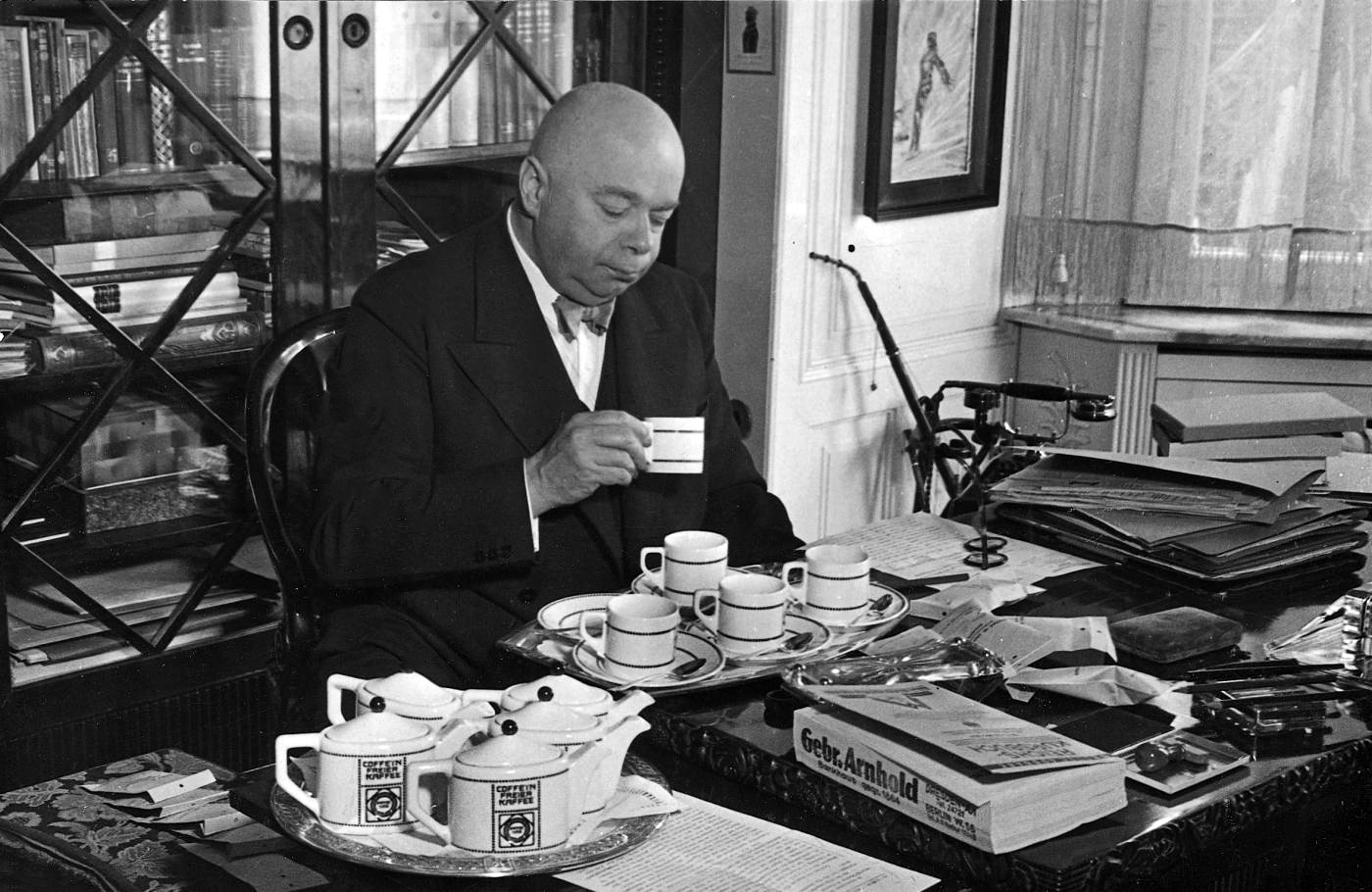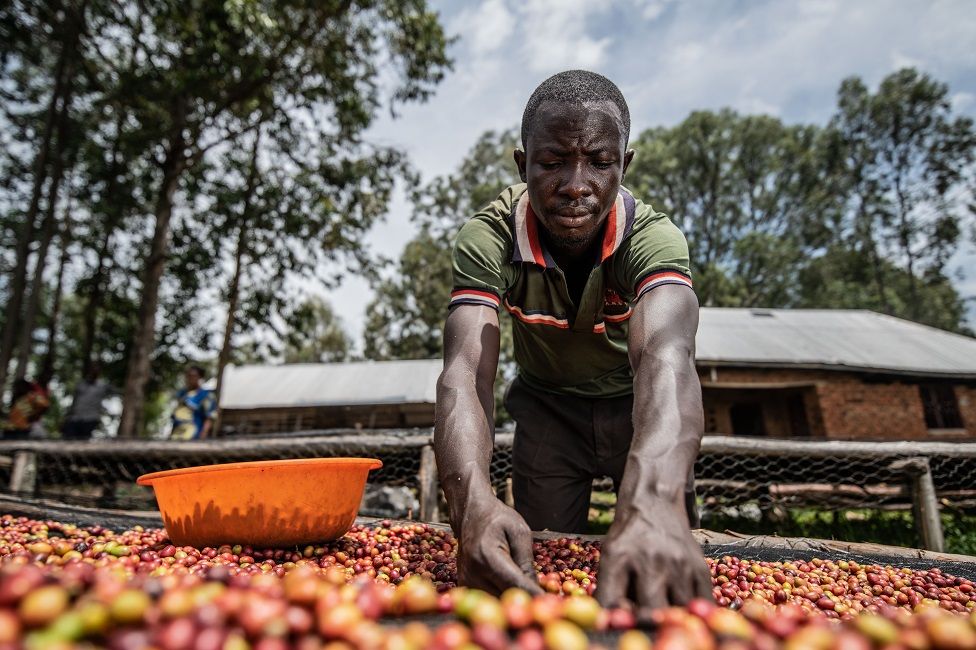Why does coffee taste better the higher it is grown?
VCA - The height and temperature of the air are closely related to the sensory properties of the fragrance, taste, comparability, acidity, post-taste and taste in the cup of coffee.
According to the International Coffee Organization (ICO) in 2020-2021, the world will consume approximately 166.5 million 60kg-type coffee bags, to meet current demand and meet beverage standards, it is necessary to understand the climate factors associated with production and affecting the quality of final coffee products (Sobreira et al, 2016; Ferreira et al, 2021), a highlighting factor that is the influence of altitude and climate that is mainly responsible for coffee quality (Zaidan et al, 2017; Pereira et al, 2018).
-
What does the height of coffee grow mean?
In some countries that have identified the coffee plant as a plant to meet the needs of the world's coffee consumers, and economic development improves the lives of farmers, to maintain their market share, one realizes that the market price of high-quality specialty coffee will be higher than the price of commercial coffee even in the same country. So, the specific flavors of coffee are determining the quality of coffee (Carmen et al, 2018).
In areas with higher altitudes, the sensory attributes are more pronounced in terms of taste, smell, and mouth sensation when compared to coffee in areas with lower altitudes (Pereira et al, 2018; Ferreira et al, 2021). The higher height is equivalent to the lower temperature, the coffee bean will take longer to ripen, facilitating the transfer of sugar and chemical compounds from plant to fruit, creating the sensory properties that are characteristic of coffee, however, there is a disadvantage that the coffee plant is likely to yield lower yields (De Bruyn et al, 2016).
Coffee trees are grown in Ethiopia. Photo: ictcoffee.com
According to Gaitán et al. (2015), the optimal temperature analysis for iron rust on coffee leaves is in the range of 16-28ºC, and it is almost impossible to survive temperatures below 15ºC. Similarly, with an iron rash on the leaves, the worms have caused huge damage annually and grow strongly at about 20-30ºC. While the ideal temperature for growing coffee is between 18 and 21ºC, the higher the coffee plant, the lower the temperature will reduce the harmfulness of iron rust on the leaves and even fruit worms. This means a lot for a high-quality coffee, less defective and therefore less negative flavor in the final coffee product.
-
The height of coffee cultivation affects the quality of the seed
Four factors in coffee beans affect the quality of coffee: the water content in the coffee bean, the physical quality of the grain, the quality of taste, and the health quality expressed by the biochemical content that affects the health of the crop. Among them, water content is affected by post-harvest processing, while physical quality, taste, and biochemical content are three factors influenced by genetic characteristics, cultivation processes, the environment, and the interaction of genetic patterns with the environment (Wintgens, 2004a).
2.1. Physical quality
The world coffee market tends to consume strong specialty coffee, so the influences from environmental conditions, altitude, and temperature affect the quality of coffee. Studies indicate that at varying degrees there will be effects on the physical quality of the particles and senses of arabica coffee (Soares et al, 2022). The main criterion for the physical quality of the grain is grain size, an abnormal ratio of grains such as elephant grains (Eskes et al, 2004), which affects the price of coffee and correlates with the quality of coffee grains, as there are some views that larger grains produce better flavors, while in fact, larger size grains are not always better. In addition to the size specifications, the defect counting standard based on “weight defect percentage” has also been specified for each coffee. (Wintgens, 2004a).
2.2. Taste quality
Arabica can grow well at elevations above 1000m above sea level, growing at an average elevation of about 700-900 m is considered the minimum height for cultivating Arabica, at this average height the coffee plant faces the attack of pests and the decline in the flavor quality of coffee beans (Hulupi, 2006).
The research was carried out by harvesting Arabica catuai seeds in the Matas de Minas region of Brazil at three altitudes of 950, 1050 and 1150 metres above sea level, with rainfall ranging from 1200 to 1300 mm, and an average annual temperature of 19.8-20.3ºC, the same dry and wet processing. Arabica catuai varieties stand out for their medium grain size, high yields, sensitivity to iron rust on coffee leaves, and good sensory quality of the grain (Sakiyama et al, 2015).

Aroma evaluation process in coffee cupping. Photo: SCA
Sensory analysis based on the taste test standards of the Specialty Coffee Association (SCA) was carried out by seven SCA-accredited experts.
In a sensory analysis of 10 attributes including flavor/aroma, taste, acidity, comparability, homogeneity, purity, balance, sweetness, post-taste, and overall, it was concluded that coffee grown in higher regions had a higher quality score than coffee in lower altitudes (Barbosa et al, 2019; Barbosa et al, 2020).
Another important thing is that the genotypes of Arabica coffee tend to produce better grain quality at higher altitudes than at lower altitudes. In low-altitude conditions, these genes interact with the low environment and cannot develop genetic quality potential (Sobreira et al, 2016; Ferreira et al, 2021).
Another study by Jacques et al. (2005), with samples of coffee in Orisi grown at an altitude of about 1020-1250m and coffee in Santa Maria de Dota about 1550-1780 m above sea level. The coffee samples were evaluated on five criteria including flavor/aroma, flavor, acidity, bitterness and characteristic flavor (flower or chocolate flavor... depending on the origin of the coffee bean).
The results were obtained on the sensory angle of these two cafes for the different characteristics. Coffee from Orosi has a lower flavor, acidity, scent and comparability than coffee from Santa Maria de Dota, with a characteristic flavor of chocolate, high acidity and a higher scent for flavor and body in coffee. The greater height leads to differences in acidity and preference found with participants who had a higher taste of the coffee from Santa Maria de Dota (Avelino et al, 2002; Decazy et al, 2003).
2.3. Biochemical content
Biochemicals in coffee beans include caffeine, trigonelline, fats, sucrose, chlorogenic acid, ketone, aldehyde, phenolic compounds, norisoprenoids, pyrazine and terpenes. Genes can generate different quantities of the same chemical at different locations or in different years due to the interaction of genes and the environment (Villarreal et al, 2009). The higher it is, the higher the sugar content in the seed (Worku et al, 2018) and the substance is proportional to the sweetness of the coffee bean.
Based on that, Arabica coffee beans may have different levels of biochemicals. Since the biochemicals of the seeds have to be transformed into energy, amino acids, fats and substances during the germination process (Shimizu et al, 2000), differences in the amount of biochemical substances in coffee beans can cause different germinations.
-
The relationship between height and particle density
Coffee grain density is the ratio of its weight to its volume, the particle density contributing to the perception of the density of a grain that can be visually expressed through more hardness, and density (light intensity). Experts around the world have recognized grain density as an important measure for classifying green coffee by quality. Coffee plants grown at larger heights and lower air temperatures resulted in slower ripening of the coffee bean, longer ripeness of the seeds facilitating a darker flavor, and denser seeds than those planted at lower heights (DaMatta et al, 2007; Vaast et al, 2006).
Arabica coffee plants grow optimally at temperatures of between 18 and 21ºC. To meet this temperature, plants must be planted at an altitude of between 1000 and 1800 meters above sea level or higher. The lower the height and the higher the temperature the fruit will ripen. The longer ripening process leads to a higher quality in a cup of coffee because it can produce a more complete biochemical mechanism necessary for the development of coffee bean quality which is the conversion of acetate derived from carbohydrates, proteins and fats in the fruit into carbon dioxide called the Krebs cycle, which occurs slower at higher altitudes resulting in a slower ripening of the fruit (Silva et al, 2005).
Coffee trees grown on hills at an altitude of 1600m in Da Lat. Photo: CFRR
However, altitude is not the only factor that affects particle density, but also the involvement of temperature, rainfall, and heat. Positive sensory quality attributes such as acidity, fruit flavor, and characteristic flavor are all correlated with the height and temperature of the air. After roasting, two volatile compounds, etanal and acetone, were identified as biochemical markers on arabica coffee plants grown at cool temperatures (Bertrand et al, 2012).
-
Height affects particle growth
The growth of a plant depends on the genotype, the environment, and the interaction of the gene type with the environment. The environment in which coffee plants grow, including height, temperature, rainfall, season, and location in the growth process of coffee seeds, affects the chemical content of the seed, seed weight, grain size, and flavor quality (Avelino et al, 2005; Woldemeskel, 2017).
Larger heights significantly improve the quality of the grain, grain weight, and size of each grain. Ignoring the genetic condition with the environment, the seeds grown at high altitudes (average temperatures around 17.1ºC) recorded significantly higher sensory evaluation scores for flavor, mouth sensation, acidity, balance, taste and preference sensation than seeds grown at low altitudes (at temperatures of about 21.2ºC). Among the seed varieties, the researchers have noted that the weight and size of seeds also increase with height, namely, the weight of seed crops at 2100m height is about 24% heavier, and the average seed size is approximately 3-7% larger than it is grown at 1200m below sea level (Adugna et al, 2017).
-
Conclusion
Studies have shown that the quality of coffee depends on many factors such as genetics, climate, temperature, altitude, rainfall, season, and seed growth time... determining the physical quality, flavor quality, and biochemical content of coffee beans. However, the height and temperature of the air are closely related to the sensory properties of fragrance, flavor, comparability, acidity and post-flavors in the final coffee product, and most coffee beans grown at higher altitudes will have a richer taste and quality than at lower altitudes.
Reference
Adugna Debela Bote, Jan Vos. 2017. Tree management and environmental conditions affect coffee (Coffea arabica L.) bean quality. NJAS – Wageningen Journal of Life Sciences 83 (2017) 39–46
Avelino J, Barboza B, Araya JC, Fonseca C, Davrieux F, Guyot B and Cilas C 2005 Effects of slope exposure, altitude and yield on coffee quality in two altitude terroirs of Costa Rica, Orosi and Santa Mar ́ıa de Dota. J Sci Food Agric 85:1869–1876.
Avelino J, Perriot JJ, Guyot B, Pineda C, Decazy F and Cilas C, Identifying terroir coffees in Honduras, in Research and Coffee Growing. CIRAD, Montpellier, pp 6–16 (2002).
Barbosa, I.P.; De Oliveira, A.C.B.; Rosado, R.D.S.; Sakiyama, N.S.; Cruz, C.D.; Pereira, A.A. Sensory analysis of Arabica coffee: Cultivars of rust resistance with potential for the specialty coffee market. Euphytica 2020, 216, 165.
Barbosa, I.P.; Oliveira, A.C.B.; Rosado, R.D.S.; Sakyama, N.S.; Cruz, C.D.; Pereira, A.A. Sensory quality of Coffea arabica L. genotypes influenced by postharvest processing. Crop. Breed. Appl. Biotechnol. 2019, 19, 428.
Bertrand, B., Boulanger, R., Dussert, S., Ribeyre, F., Berthiot, L., Descroix, F., Joe ̈t, T., 2012. Climatic factors directly impact the volatile organic compound fingerprint in green Arabica coffee bean as well as coffee beverage quality. Food Chemistry 135 (4), 2575e2583.
Bertrand, B.; Vaast, P.; Alpizar, E.; Etienne, H.; Davrieux, F.; Charmetant, P. Comparação da composição bioquímica do feijão e da qualidade da bebida de híbridos de Arábica envolvendo origens sudanesas-etíopes com variedades tradicionais em várias elevações na América Central. Tree Physiol. 2006, 26, 1239–1248.
Borém, F.M.; Cirillo, M.A.; Alves, A.P.C.; Santos, C.M.; Liska, G.R.; Ramos, M.F.; Lima, R.R. Coffee sensory quality study based on spatial distribution in the Mantiqueira mountain region of Brazil. J. Sens. Stud. 2019, 35, 12552.
Bosselmann, A.S.; Dons, K.; Oberthur, T.; Olsen, C.S.; Ræbild, A.; Usma, H. He influence of shade trees on coffee quality in small holder coffee agroforestry systems in Southern Colombia. Agric. Ecosyst. Environ. 2009, 129, 253–260.
Carmen Peligros-Espada, Joel Ulises Sevilla-Palma and Octavio Uña-Juarez. 2018. Importance of Crop Altitude Range for Coffee Production: Findings from Honduras.
Compendium of coffee diseases and pests. Gaitán, Alvaro León. St. Paul, Minnesota. 2015. ISBN 978-0-89054-472-3. OCLC 1060617649
DaMatta, F.M., Ronchi, C.P., Maestri, M., Barros, R.S., 2007. Ecophysiology of coffee growth and production. Brazilian Journal of Plant Physiology 19 (4), 485e510.
De Bruyn, F.; Zhang, S.J.; Pothokos, V.; Torres, J.; Lombot, C.; Moroni, A.V.; Callanan, M.; Sybesma, W.; Weckx, S.; De Vusty, L. Exploring the Impacts of Postharvest Processing on the Microbiota and Metabolite Profiles during Green Coffee Bean Production. Appl. Environ. Microbiol. 2016, 83, 1–40.
Decazy F, Avelino J, Guyot B, Perriot JJ, Pineda C and Cilas C, Quality of different Honduran coffees in relation to several environments. J Food Sci 68:2356–2361 (2003).
Eskes, A.B. & T. Leroy (2004). Cofee selection and breeding. In: Wintgens, J.N. (Ed.), Coffee: Growing, Processing, Sustain- able Production. WILEY-VCH Verlag GmbH & Co. KGaA, Weinheim.
Ferreira, D.S.; Bravin, G.C.; Nascimento, M.; Nascimento, A.C.C.; Ferreira, J.M.S.; Amaral, J.F.T.; Pereira, L.L.; Rodrigues, W.N.; Ribeiro, W.R.; Castanheira, D.T.; et al. Exploring the multivariate technique in the discrimination of Coffea arabica L. cultivars regarding the production and quality of grains under the effect of water management. Euphytica 2021, 217, 118.
Ferreira, D.S.; Do Amaral, J.F.T.; Pereira, L.L.; Ferreira, J.M.S.; Guaçoni, R.C.; Moreira, T.R.; De Oliveira, A.C.; Rodrigues, W.N.; De Almeida, S.L.H.; Ribeiro, W.R.; et al. Physico-chemical and sensory interactions of Arabica coffee genotypes in different water regimes. J. Agric. Sci. 2021, 159, 1–9.
Ferreira, W.P.M.; Queiroz, D.M.; Silvac, S.A.; Tomaz, R.S.; Corrêa, P.C. Effects of the orientation of the mountainside, altitude and varieties on the quality of the coffee beverage from the “Matas de Minas” Region, Brazilian Southeast Retrieved from. Am. J. Plant Sci. 2016, 7, 1291–1303.
Hulupi, R. (2006). Kajian Genetika Ketahanan Kopi Arabika Terhadap Nematoda Penggali Akar (Radopholus similis Cobb). Disertasi, Universitas Gadjah Mada. Yogyakarta.
ICO. Organização Internacional Do Café, Revista Eletrônica Situada. Available online: http://www.ico.org/pt/about_statistics_ p.asp?section=Estat%EDstica (accessed on 25 March 2021).
Jacques Avelino,Bernardo Barboza,Juan Carlos Araya,Carlos Fonseca,Fabrice Davrieux,Bernard Guyot and Christian Cilas. 2005. Effects of slope exposure, altitude and yield on coffee quality in two altitude terroirs of Costa Rica, Orosi and Santa Marı ́a de Dota
Joët, T.; Salmona, J.; Laffargue, A.; Descroix, F.; Dussert, S. Use of the growing environment asa source of variation to identify the quantitative trait transcriptsand modules of co-expressed genes that determine chlorogenic acid accumulation. Plant Cell Environ. 2010, 33, 1220–1233.
Lingle, T.R., 1984. Coffee Cuppers’ Handbook, the Specialty Coffee Association of America (SCAA).
Pereira, L.L.; Guarçoni, R.C.; Cardoso, W.S.; Taques, R.C.; Moreira, T.R.; Da Silva, S.F.; Caten, C.S.T. Influence of Solar Radiation and Wet Processing on the Final Quality of Arabica Coffee. J. Food Qual. 2018, 2018, 1–9.
Sakiyama, N.S.; Martinez, H.E.P.; Tomaz, M.A.; Borém, A. Café Arábica, do Plantio a Colheita; Editora UFV: Abbotsford, BC, Canada, 2015; 316p.
Shimizu MM and Mazzafera P 2000 Compositional Changes of Proteins and Amino Acids in Germinating Coffee Seeds. Braz. arch. biol. technol. vol.43 no.3. http://dx.doi.org/10.1590/S151689132000000300003 http://www.scielo.br/pdf/babt/v43n3/v 43n3a03.pdf
Silva, E.A., Mazzafera, P., Brunini, O., Sakai, E., Arruda, F.B., Mattoso, L.H.C., Carvalho, C.R.L., Pires, R.C.M., 2005. The influence of water management and environmental conditions of the chemical composition and beverage quality of coffee beans. Brazilian Journal of Plant Physiology 17 (2), 229e238.
Soares Ferreira, D.; Eduardo da Silva Oliveira, M.; Rodrigues Ribeiro, W.;Altoé Filete, C.; Toledo Castanheira, D.;Cesar Pereira Rocha, B.;
Polonini Moreli, A.;Catarina da Silva Oliveira, E.; Carvalho Guarçoni, R.; Partelli, F.L.; et al. Association of Altitude and Solar Radiation to Understand Coffee Quality. Agronomy 2022, 12, 1885. https://doi.org/10.3390/ agronomy12081885
Sobreira, F.M.; Oliveira, A.C.B.; Pereira, A.A.; Gonçalves, M.A.; Sakiiyama, N.S. Divergence among Arabica coffee genotypes for sensory quality. Aust. J. Crop. Sci. 2016, 10, 1442–1448.
Vaast, P., Bertrand, B., Perriot, J.J., Guyot, B., Genard, M., 2006. Fruit thinning and shade improve bean characteristics and beverage quality of coffee (Coffea arabica L.) under optimal con- ditions. Journal of the Science of Food and Agriculture 86 (2), 197e204.
Villarreal D, Laffargue A, Posada H, Bertrand B, Lashermes P and Dussert S 2009 Genotypic and environmental effects on coffee (Coffea arabica L.) bean fatty acid profile: impact on variety and origin chemometric determination. J. Agric. Food Chem. 2009, 57, 11321– 11327. DOI:10.1021/jf902441n.
Wintgens, J.N. (2004a). Coffee bean quality assessment. p. 976. In: Wintgens, J.N. (Ed.), Coffee: Growing, Processing, Sustainable Production. WILEY-VCH Verlag GmbH & Co. KGaA
Woldemeskel AL 2017 Genotype x environment interaction and stability analysis of some promising Iluababora coffee (Coffea arabica L.), genotypes for yield and yield related traits in Southwestern Ethiopia. MSc Thesis. Jimma Univesity, Ethiopia.
Worku M, De Meulenaer B, Duchateau L, Boeckx P 2018 Effect of altitude on biochemical composition and quality of green Arabica coffee beans can be affected by shade and postharvest processing method. Food Research International 105:278–285.
Zaidan, U.R.; Corrêa, P.C.; Ferreira, W.P.M.; Cecon, P.R. Environment and varieties influence the quality of coffees in Matas de Minas. Coffee Sci. 2017, 12, 240–247.






